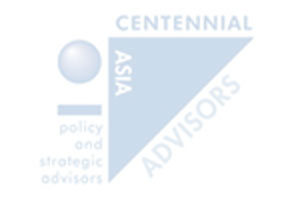Asian Insights
A summary of “Asian Insights” weekly update is published here. The full version is available through paid subscription. Please click here to register your interest. Our executive will get in touch with you.

China: Mounting challenges to compel far-reaching policy changes
Severe internal and external challenges are compelling China’s leaders to make fundamental policy changes.
- Near term: There has been a clear shift in favour of greater stimulus, with the focus not on maximizing growth but on ensuring stability.
- There are four reasons why the announced measures lack potency. The changes do not go far enough to restore consumer confidence. Neither do they provide incentives for local governments to implement stimulus actions swiftly. Private enterprise is not likely to be convinced that Xi will really turn away from suspicion of the private sector. And signs of divisions within policy circles are also a worry.
- Longer term: China will place greater emphasis on securing its geo-strategic position rather than on prioritizing growth. It will engage in a range of measures to solidify its position in southeast and central Asia while accelerating the inward turn in policies so as to reduce reliance on external demand.
Malaysia: Solid fundamentals to cap Ringgit weakness
- The Ringgit fell 3.6% against the USD in April, outpacing declines in the Thai Baht (-3.1%) and Singapore Dollar (-2.5%).
- Three factors explain why the Ringgit has weakened more than its peers in the region – the Ringgit’s significant correlation with the CNY, belated policy tightening by the central bank, and limited currency market intervention.
- Nevertheless, solid fundamentals will cap Ringgit weakness. The favourable trade position from the broad-based rally in commodity prices and relatively quiescent inflation will prop up the Ringgit, which we expect to come back to 4.2 against the USD by end-2022.
Implications of Recent Developments:
- Korea: Consumption and investment have slowed. The central bank’s rate hikes are cooling the overheating housing market which the incoming Yoon government has vowed to tackle.
- Indonesia: Investment data show that Indonesia is progressing in its efforts to accelerate economic growth. But policy flip-flops such as the ban on palm oil exports could undermine confidence in policy making.
- Singapore: Worries about rising inflation could prompt further policy tightening in October.
- Taiwan: Despite headwinds from China, strong tech exports and investment spending should help Taiwan achieve a robust 4% growth in 2022.
- Thailand: Both consumer spending and investment decelerated significantly in March. The recovery in tourism has also been sub-par.
- Vietnam: A strong recovery is underway, led by investment and exports. Domestic demand is also supporting retail sales growth. An anti-corruption crackdown is underway, with senior political and business figures implicated.

What risks does China pose?
A worsening pandemic, economic deceleration and hesitant policy making will hurt China and rebound onto the global economy.
- China can no longer contain COVID-19 infection surges without significantly damaging its economy: there will be rolling lockdowns affecting more regions in China. Policy makers remain conflicted between different aims, which limits the effectiveness of stimulus efforts.
- Aside from further economic downgrades within China, watch out for political surprises as well. President Xi may need to make more compromises with his rivals than he had planned to. Global growth in 2022 could be cut by another 10-20 basis points.
- There could be geo-political consequences as well if President Xi needs an external distraction – Taiwan could endure more pressure.
Asia tech exports: Slowing momentum, but underlying demand resilient
- Overall, we still see relatively healthy end-demand for Asian technology exports as a handover from consumer to enterprise IT spending extends the current tech cycle. Lead indicators such as Taiwan’s export orders show some slowing but to still-strong levels. This is despite a marked slowdown in orders from the Greater China region.
- Similarly, end-demand indicators also support the positive outlook. US new orders for IT goods slowed from multi-year highs to a still-high run-rate.
- The economies specialising in technology exports and production i.e., Taiwan, Singapore, Korea, Philippines and Malaysia will continue to outperform.
Bank Indonesia can afford to go slow with tightening in 2022
- So long as i) inflation remains under control and ii) the Rupiah (YTD: -1.6%) shows no sign of buckling under pressure from the Fed’s tightening and downside risks in China, we believe Bank Indonesia’s tightening cycle will only commence in 2H22.
- The economic outlook looks more promising. The unwinding of COVID-19 restrictions is likely to provide a fillip to the tourism sector and earnings, which in turn will support the external position and Rupiah.
- We now pencil in 3 x 25bps rate hikes (as opposed to just 2 x 25bps), given the Fed’s now more aggressive tightening stance. The first rate hike could come as soon as June, particularly if the Fed opts for back-to-back 50bps rate hikes in April and May.
Highlights from the CAA Weekly Table:
- Malaysia: Inflation remains well-behaved due to base effects. Bank Negara is likely to allow the recovery to take its course, avoiding a rate for now. A 25bps hike to the policy rate is likely in July.
- Philippines: The economy is likely to be boosted by a stronger-than-expected showing by remittances, mainly because of the reopening of economies across the globe that buoy labour markets and wages.
